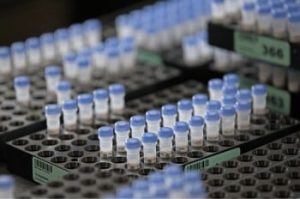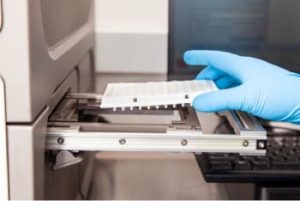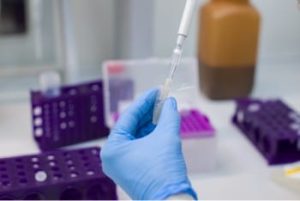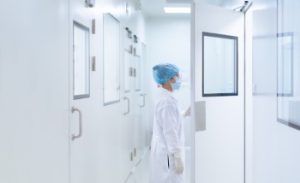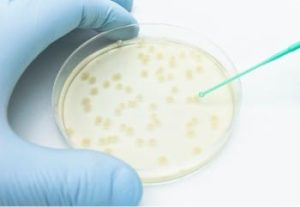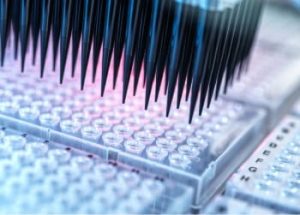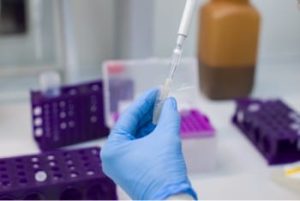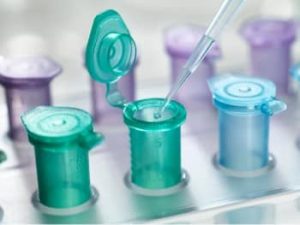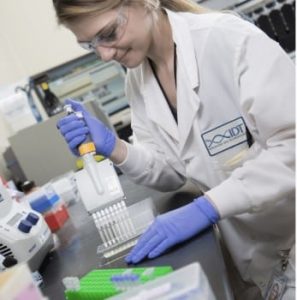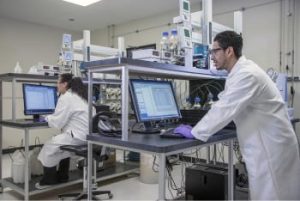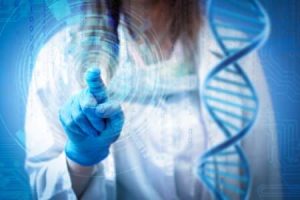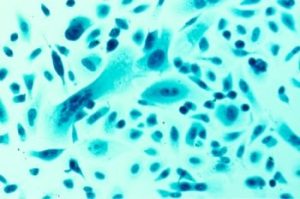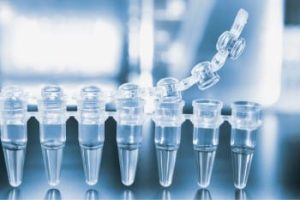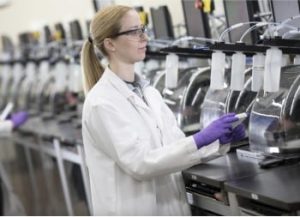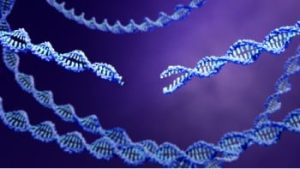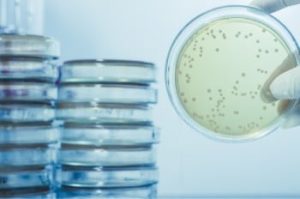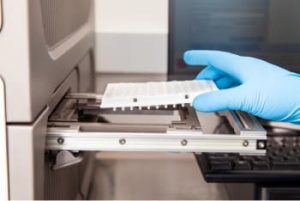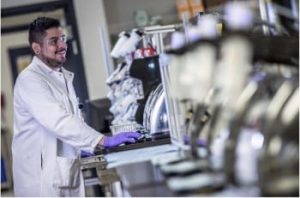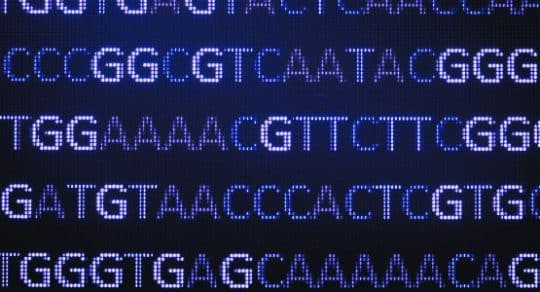Introduction
IDT customers are making some of the most exciting advances in scientific research by tackling tough challenges facing our global community. One particularly urgent topic being addressed by scientists is the rise of antimicrobial-resistant infections, which cause more than a million deaths each year [1]. Precision therapeutics company Locus Biosciences uses synthetic biology tools in their research, such as custom genes synthesized by IDT, to engineer bacteriophages—viruses that specifically infect bacteria—to express proteins strategically designed to kill the antibiotic-resistant microbes. Drew DeLorenzo, PhD, a scientist at Locus Biosciences, shared some insights into his research and how IDT products are helping scientists discover novel ways to fight back against antibiotic resistant microbes.
Can you talk a little bit about the broader goal of Locus Biosciences and how your research is pushing forward scientific advancements?
Locus Bioscience’s focus is researching methods to combat infectious disease, specifically targeting antibiotic resistant microbial infections. Once revolutionary, antibiotics have reduced efficacy for some infections due to the evolution of multi-drug resistant strains. Additionally, antibiotics can sometimes interfere with the effectiveness of other treatments and may cause disease through the disruption of the microbiome. Bacteriophages, which are naturally occurring predators of bacteria but do not infect human cells, kill bacteria by a distinct mechanism that circumvents resistance to standard antibiotics. Furthermore, bacteriophages kill only specific bacteria, allowing removal of pathogenic strains without harming the native microbiome.
What types of proteins do you work with and what are the goals for creating improved versions of these proteins and systems?
The core of the Locus platform are bacteriophages, which are viruses that specifically infect and eliminate bacteria. Phages are extremely diverse in nature and are regarded as the most abundant biological entities in the world. Our end-to-end pipeline begins with phage isolation from the environment and is followed by characterization using robots to perform high-throughput phenotypic and genetic assays. Selected phages are combined into cocktails that can synergize to better kill relevant strains of bacteria. A phage cocktail with optimized activity across panels of pathogenic isolates serves as the starting point for further engineering.
Engineering our phage through genetic manipulation is essential, as our goal is for the drug product to completely eliminate the targeted microbial population. In nature, it is not advantageous for a phage to completely wipe out its host, as host bacteria are required for the phage to replicate. Additionally, bacteria are able to evolve to become resistant to phages, similar to how they respond to antibiotics. By weaponizing our phage with synthetic protein payloads or by improving their ability to infect and kill bacteria, we can ensure optimal outcomes.
Can you talk about your research and how synthetic biology has helped propel it?
Finding ways to improve the ability of a phage to successfully infect and kill infectious pathogens is critical to the Locus mission. Applying synthetic biology principles to modifying phage genomes to express protein payloads that demonstrate beneficial properties, such as direct anti-microbial properties or increasing the phages infectivity, is core to our development pipeline. One payload that Locus Biosciences employs is CRISPR-Cas3, which is a powerful exonuclease that shreds the DNA of targeted bacterial cells beyond repair, leading to rapid and predictable cell death. Locus is continually innovating and trialing new protein payloads as part of our engineered phage products. Through our partnership with IDT, we can rapidly and cost-effectively synthesize DNA for prototyping efforts.
Talk about how synthetic biology tools in general, and some of IDT’s products specifically, improve your research and where they fit in your workflows?
Locus has been able to incorporate a diversity of IDT’s offerings into many of our core synthetic biology applications over the past 4 years. One reason for this is that we found IDT to be the top provider in regard to turnaround time, as well as affordability, when we surveyed the available suppliers. The even starker differentiator is IDT’s flexibility in customizing their product offerings to us and a commitment to facilitating communication between Locus stakeholders and IDT. A great example of IDT’s flexibility is their gene synthesis plasmid offerings. Locus provides custom plasmid vectors that are pre-made to contain all of the necessary conserved DNA elements for a given workflow, enabling IDT to synthesize and insert only the variable DNA elements, which reduces both cost and complexity.
IDT’s oligonucleotides are another high-volume item that Locus utilizes in a few workstreams, including PCR applications (e.g., in-house plasmid assembly, Sanger sequencing) and DNA/RNA quantification (qPCR). The Ultramer™ product line is particularly helpful for constructing difficult DNA sequences, such as those found in CRISPR guide RNA arrays. Finally, pairing nicely with the oligo primer/probes is IDT’s Gene Expression master mix, which pairs value with performance as their reagent optimizations enable ambient temperature shipping conditions that reduces shipping costs.
How have tools like AI and machine learning progressed Locus Biosciences research and platform?
Locus has built a bioinformatic platform that captures and integrates all the data generated across our company. Recognizing the power of multivariable datasets (e.g., structural and functional, diagnostic and demographic), we invested in developing a single unified data model that captures all of the data generated, collected, and purchased by the company. Having a centralized informatics function enables data scientists to generate unbiased insights regardless of business area. The most valuable function it provides us is the ability to leverage captured data to see forward in time and make data-informed predictions.
Combining genomic and functional datasets enables us to understand how certain organisms may interact with one another. Leveraging data generated from early Locus-developed drugs enables us to design drugs against more complex organisms or consortia of organisms. The insights provided using predictive algorithms allow the team to move more quickly, make decisions more confidently, and develop novel precision medicines faster.
References
- About antimicrobial resistance. Centers for Disease Control and Prevention. Last reviewed: October 5, 2022. Accessed December 8, 2022. https://www.cdc.gov/drugresistance/about.html
For research use only. Not for use in diagnostic procedures. Unless otherwise agreed to in writing, IDT does not intend these products to be used in clinical applications and does not warrant their fitness or suitability for any clinical diagnostic use. Purchaser is solely responsible for all decisions regarding the use of these products and any associated regulatory or legal obligations. Doc ID: RUO22-1649_001

